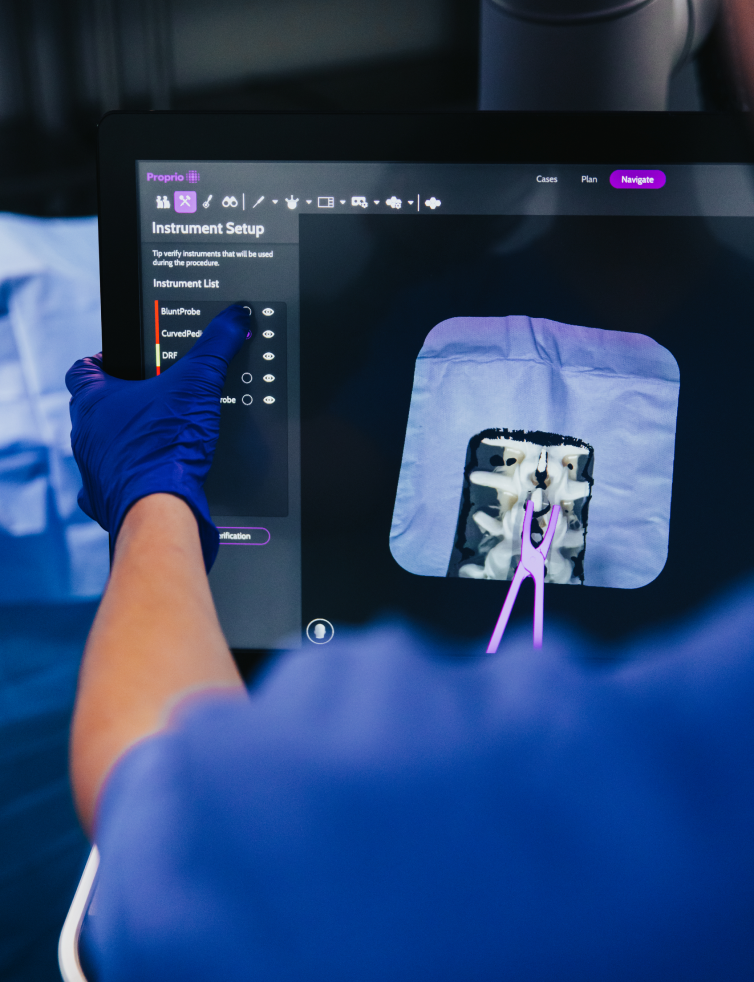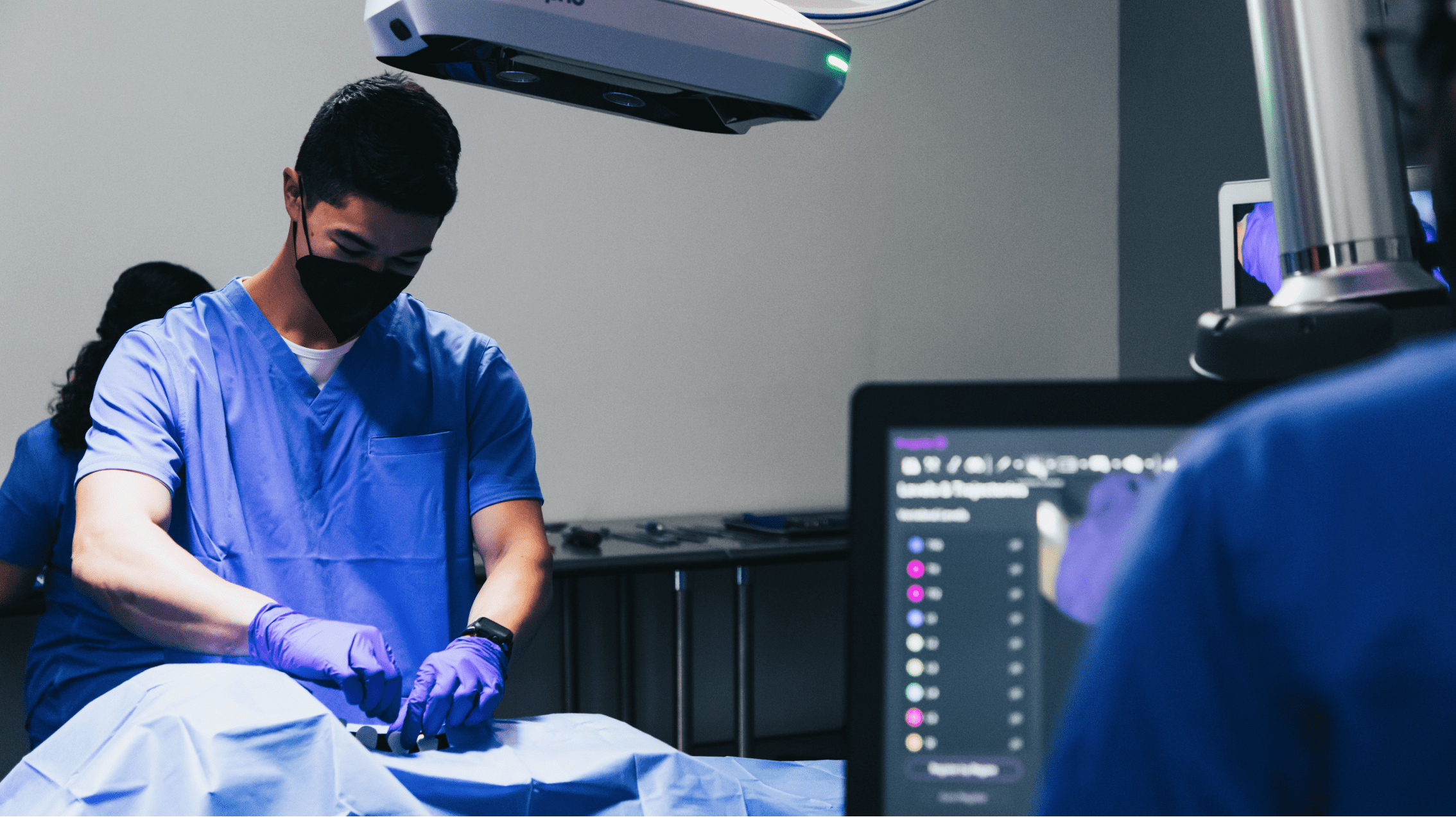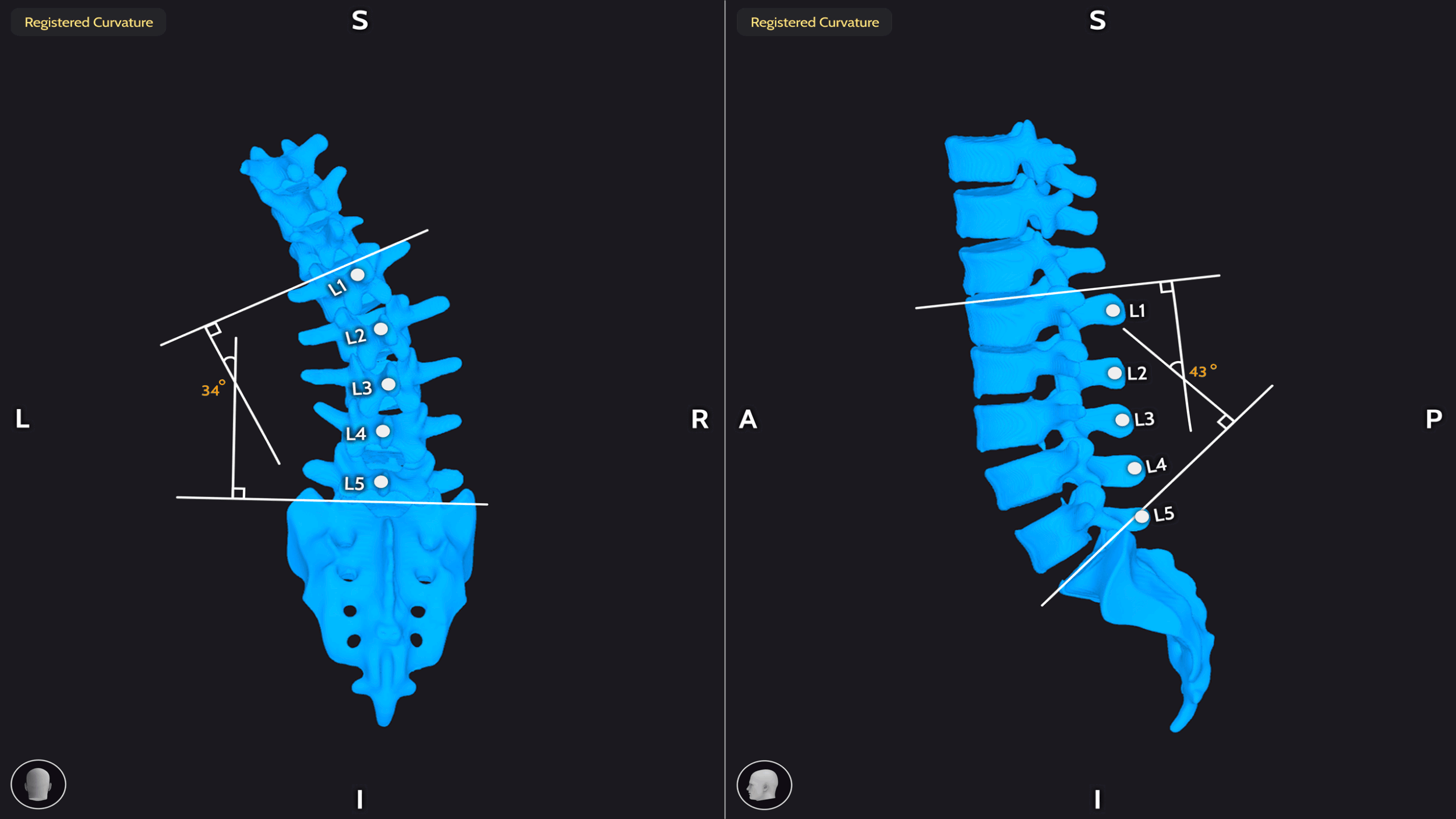
Proprio: Innovation in Med Tech
How I led UX strategy, people, and design for a groundbreaking surgical guidance platform.
2020-2025 Senior Manager, UX Design & Software Engineering
Leading UX at Proprio
100+
Clinical Cases
3
FDA 510k Clearances
5
Major Design Awards
My Role & Leadership
Head of UX at Proprio
I led design and user-facing software engineering at this fast paced med-tech startup. I was part of the Software Leadership Team with a dotted line to the CEO for UX strategy, focusing on safety, usability, innovation and data capture in the operating room.
I also partnered with the VP of Data Applications, providing UX strategy and design resourcing for AI initiatives.
Managed Hybrid Team
I scaled the UX team over five years to support the product from launch through ongoing updates and innovation. Hires & direct reports included:
UX Designers
Software Engineers (UI, 3D, Graphics)
Software Test Engineers
VR Prototypers
Leadership Philosophy
Prioritize collaboration always
Design for patient safety first
Lead with stability through turbulence
Champion learning & sharing, with a focus on AI innovation
Ground decisions in both qualitative & quantitative insight
Protect the team’s energy and space to recharge
Hire passionate learners
Proprio at a Glance
All product images and videos are courtesy of Proprio, Inc.
Paradigm is a real-time 3D surgical guidance system that enables intraoperative visualization and measurement—without radiation. The platform integrates machine learning, computer vision with depth and RGB cameras, and optically tracked surgical instruments.
With a data-first mindset, Proprio records surgical procedures, creating a foundation for AI data products that can drive surgical training, performance insights, and future automation.
See more about the technology at propriovision.com

The Challenge
Patients may need spinal fusion for conditions such as scoliosis, degenerative disc disease, or fractures, yet current methods face significant clinical and technical challenges.
Clinical & User Problems
Radiation exposure: Frequent CT scans expose patients and surgical staff to health risks.
Severe consequences: Errors in complex spine surgery can cause lifelong pain or paralysis.
Steep learning curve: Over 13 years of training is needed, leaving too few surgeons for growing demand.
Limited data capture: Lack of intraoperative data limits learning and surgical improvements.
Product & Business Challenges
Regulatory complexity: Class II devices must meet strict FDA standards and documentation.
Workflow sensitivity: Surgeons resist tools that disrupt established routines.
AI Integration: AI outputs must achieve accuracy within clinically acceptable tolerances, support user-driven corrections, and maintain traceability to build trust.
Cross-functional alignment: Success requires tight collaboration across diverse teams.
Pressure to innovate safely: Companies must deliver new solutions without compromising safety or compliance.
UX Strategy & Collaboration
Goal
Guiding the team to design at this intersection is my core goal.
In this project, it was tempting to create solutions that exceeded technical feasibility—especially when accuracy outcomes were uncertain before development. Balancing ambition with realistic constraints was essential.
To reach this balance, we followed a structured process tailored to medical device development.
Process
I developed this diagram as a synthesis of how I helped shape Proprio’s process—blending UX best practices like design thinking and the double diamond with the regulated development of a Class II medical device. While I created the visualization after leaving, it captures the approach we built in practice.
The “Design Volatility” line illustrates how decision churn is highest early on, then stabilizes toward deployment. By combining agile iteration with waterfall milestones, we were able to innovate, validate, and meet FDA requirements without losing sight of surgeon needs or business goals.
Making this process work required close alignment across all disciplines.
Bridging silos was a core focus of my role—aligning across surgical workflows, engineering, compliance, and business goals.
Established regular design reviews for collaborative feedback.
Connected leadership with UX designers through recurring 1:1s.
Launched design studio workshops to gather ideas and build shared ownership.
Set up and facilitated demos for the CEO.
Supported board of directors and medical advisory board demos.
This combination of a clear vision, structured process, and strong cross-functional alignment created the foundation for our results.
Outcome & Impact
Our approach delivered measurable results in safety, adoption, and innovation:
Early adoption at UW Harborview and Duke University, with strong surgeon feedback.
Enabled a pipeline of AI-driven data products through strategic UX planning.
Integrated usability engineering and risk analysis to achieve 3 successful 510(k) FDA clearances with minimal feedback or delay.
Helped reduce surgical risks and streamline intraoperative workflows.
Supported 50+ clinical cases with promising surgical outcomes.
Maintained rapid response cycles — moving from clinical feedback to deployment with minimal turnaround.
Note: Many project details and artifacts are confidential. I’m happy to discuss my work and approach further in conversation.



